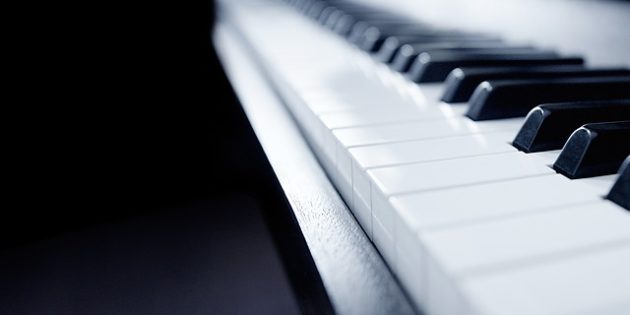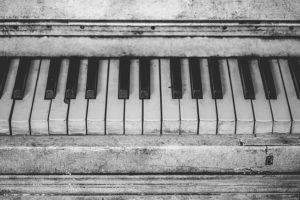I get lots of questions from people all around the world about all aspects of memory and today I had this question from someone who has been reading my book on Memory Improvement Techniques “Memory Power Up“.
Here is what they had to say:
I have been studying your book Memory Power-up in effort to help me learn to play the piano. My problem is that I cant remember what the notes are, or where they are or my hands are on the keyboard.
The usual recall techniques, as in your book, do not help, as recall has to be intuitive.
One just has to know where to go without conscious thought. Are there any books or courses that might help with this specific problem?
I would be most grateful for your advice
Now as a musician myself (learning to play the guitar) I can understand the challenge but I also had a few piano lessons when I was very young so I can really relate to this situation.
The first thing we need to get clear here is exactly what are we trying to achieve?
As it is written, the question implies this person can’t remember what note is where and how to get to it when their hands are on the keyboard.
I would imagine though that the problem is more complicated than that and this person cant find the right note at the right time whilst playing a piece.
Another thing that is not clear is whether this person is trying to play whilst reading the music or whether they are simply just trying to name the notes.
So there are a lot of unknowns here that make giving a good solution to this persons individual challenge somewhat difficult therefore I am going to have to be a little bit generic in my answer and hope that when they read this there will be something of value for them.
So lets start with the basics and see if we can use some fundamental memory principles to help us remember where the notes are.
Lets start by looking at part of a piano keyboard:
A piano keyboard consists of white notes and black notes as shown above.
Between every black note there is a white note though in some cases there are 2 white notes which if you look at a keyboard will give you a black note grouping pattern of two black notes, three black notes, two black notes, three black notes etc.
These black notes are the sharps and flats but lets leave them to one side for a second and look at the white notes.
Finding the White Notes on a Keyboard
The white notes are the A, B, C, D, E, F, G of the musical scale so as you look at the white notes they repeat this pattern along the full length of the keyboard.
So straight away as most of us know our alphabet there is something we can immediately relate to – there are seven notes and they have the same names as the first seven letters of the alphabet.
This principle of association – link to something we already know is one of the basic principles of memory.
So if we can work out a starting point on the keyboard, and know where A is, all we have to do is simply recite the alphabet up to G as we work our way along the notes and there we have it, we now know the names of the white notes and where they are.
If we start considering this from a musical perspective, the first note we usually learn is the Middle C and this is easy to locate because it is just to the left of each two note black grouping.
So that is the white notes done.
In the beginning while we are getting used to the instrument we may fumble a little and get a few notes wrong but what we always have is a way of being able to find a G or an F knowing the alphabet rule and a starting point like knowing where the C note is.
At this early stage this process acts as a crutch to the memory – we have to rely on the technique to help us recall the notes.
However with practice we will start to notice where the G is or where the B is and pretty soon when our teacher tells us to play an A, we can go straight to it because we “just know” where it is.
That comes with time and practice and eventually we get to the stage where we can hardly remember the time when we did not know it.
Mmmmm Learning the Scary Black Notes
Then after a while as we start to include the scary black notes (at least I was always scared of them) we start to realise that the black note immediately to the left of a B is a B flat and that the black note immediately to the right of the A is an A sharp.
The confusing thing is when we discover that B flat and A sharp are the same note – thats when it gets difficult.
However this is not about music theory and we will leave that there but with this approach we now have a way of being able to name every note.
I suspect though that this is not the challenge this person is facing when they are sat at the old ivories.
I would imagine they are struggling to find the notes as they play whilst reading music.
This is always a challenging thing to do in the beginning, but one that anyone with a little patience and perseverance can learn.
Muscle Memory and Learning The Piano
It relies on having your hands in the right place, knowledge of the keyboard (which we covered above) and what is known as muscle memory.
Just like a skilled typist knows exactly where each letter is on the keyboard of their computer without looking, a skilled pianist will know where each note is without looking.
This is because the muscles in the arms and hands have done the task of finding a particular note at a particular time so often that eventually the person does not even have to think about it.
The key here is regular practice.
Without going into too much detail there are different levels of learning that range from not even knowing we don’t know (unconscious incompetence) through to knowing it so well we don’t even have to think about it (unconscious competence).
Over time and with regular practice, a positive attitude and a willingness to make mistakes you can transit the various stages from complete beginner to skilled practitioner.
Slow it Right Down
Bringing this back to a musical context, one thing that I have found extremely useful was a piece of advice I picked up from an excellent guitar magazine I subscribe to.
They say that when you practice, do so at the slowest speed you need to play at in order to get it right.
Then when you can do it at that speed, turn your metronome up a setting ad get it right at that speed.
Over time doing it this way can not only really help you get great technique, but also remember what it is you are trying to play.
In helping this person, I would say take the piece that is causing you problems, play it VERY slowly to start with and keep going slower until you get it note perfect – even if you have to take a few seconds between notes to find the next one.
Then slowly speed up.
In time you will master it and the more you do this the easier it will become and the better you will be at remembering where to put your fingers.
Unfortunately there is no short cut, it is just practice.
One final tip you might want to consider is practice playing in your imagination when you are away from the instrument and see what happens.
Let me know how this works for you or if you know of any other suggestions, do let me know by adding a comment below.

